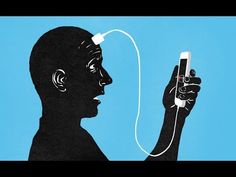
April 2019
www.ninet.med.ubc.ca
PDF version of the newsletter can be found here
Take 3! This is our 3rd newsletter from the NINET Public Advisory Committee (PAC), comprised of members of the public, clinic patients, lab personnel and Dr. Fidel Vila-Rodriguez. We meet monthly to discuss improvements at the clinic, on-going research, and to exchange ideas how to improve access to and education about non-invasive neurostimulation therapies for people with mental illness. If you have questions, suggestions, or topics you would like to see in the newsletter, contact us at newsletter.ninetlab@gmail.com or leave a note for the newsletter editors at the NINET office.
GENETIC TESTING AND PRIVACY
Private labs have started to offer genetic testing to help determine the best treatment options for people with major depression and other mental health disorders. The testing is expensive (and raises questions about access to health care). It also raises privacy concerns.
Genetic testing is part of the “personalized medicine” movement which sees medical science moving away from a ‘one size fits all’ approach to using individual approach to better target therapies in order to achieve the best outcomes in the management of a patient’s health. This is not an “Ancestry.com” or “23&Me” DNA test; it is a targeted genetic testing ordered by a doctor to help guide treatment decisions.
By analyzing information about our genome along with other clinical and diagnostic information, patterns can be identified that help determine the most effective interventions. Instead of doing a trial after trial of different classes of anti-depressant drugs, a genetic test may be useful to identify which drugs are more likely to work given the person’s genetics.
There are legitimate fears, however, that genetic test results may be used against a patient in a discriminatory way, for example, with the denial of life or disability insurance coverage or employment opportunities. Fear of genetic discrimination may cause patients to avoid genetic testing that may otherwise be a useful tool for their physician in developing a treatment plan.
There is federal legislation designed to protect the privacy of genetic test results done for medical or research reasons. The Genetic Anti-Discrimination Act, SC 2017, c.3 prohibits the requirement of disclosure of genetic tests outside of a physician-patient relationship or medical research. The statute is found here. The legislation is controversial – it was first introduced in 2013 and was not passed. The insurance industry lobbied to be excluded but failed when the current Act was passed in 2017.

There are questions about the constitutional validity of the Act. The province of Québec challenged the Act; they focused on the federal use of the criminal law power to prevent genetic discrimination in the Act. Québec argued that protecting health or medical privacy is not properly a subject of the federal criminal law power; it is more properly a provincial matter dealing with property and civil rights (e.g. contracts of insurance). The Quebec Court of Appeal agreed and struck down the Act as unconstitutional in late December 2018. The issue is now pending before the Supreme Court of Canada. If the Québec Court of Appeal’s decision is affirmed, then it will be up to the individual provinces to decide whether to legislate protections against genetic discrimination in their respective human rights codes, insurance acts or entirely new legislation.
In seeking to protect genetic privacy, Canada is in good company. Most European countries banned insurers from accessing privately held genetic test results since (or even before) the UNESCO Declaration on Human Genetic Data in 2003. The USA also has a patchwork of federal and state regulation barring the use of genetic tests in health insurance, employment, and, in some cases, by life insurers. Canada was the last member of the G7 to pass a genetic discrimination law. It seems likely that some form of genetic privacy protection will be in place in Canada over time, whether it is the current Act or some future variation once the current constitutional challenge is resolved. Time will tell.
FOCUS ON CURRENT RESEARCH
This month, we shine a spotlight on the TMS-fMRI study in the NINET Lab. The purpose of this trial is to identify biomarkers of response to repetitive transcranial magnetic stimulation (rTMS) in individuals with first episode or treatment resistant depression. Participants will have rTMS while being scanned in the functional MRI imaging machine.
To learn more about this research, including eligibility for enrolment, please visit https://ninet.med.ubc.ca/research/
ASK AN EXPERT: MOTOR THRESHOLD
Our research expert, Dr. Fidel Vila-Rodriguez, shares why a motor threshold test is done as part of rTMS treatment. At the start of rTMS treatment (and about every six months during active maintenance), we do a “motor threshold test” to determine the appropriate dose of energy for individuals.
At the top of your head lies the primary motor cortex of your brain. This part of your brain controls movement and at the very top is the part that controls your hands.
In a motor threshold test, the rTMS coil is placed over your primary motor cortex and a single pulse of energy is discharged while the doctor and technician both watch your hand movement. The test is repeated at different levels of energy until the minimum amount of energy is found that triggers a slight twitch. When the twitch response is present at that dose three times out of six, this is your motor threshold.
The motor threshold response result indicates the relative excitability of your brain in response to a pulse of energy from the rTMS machine. It is used to determine a patient’s rTMS energy dose and safety limits. This way, the rTMS dose is calibrated to each patient’s individual brain.
Some fun FAQ’s about the Motor Threshold:
- Motor threshold varies naturally across individuals.
- Your motor threshold may also slightly vary over time.
- The actual number is only important for dosing rTMS.
- If your motor threshold goes slightly up or down over time, this is not a sign that rTMS is working for you (or not).
- There is no research to suggest a particular motor threshold number is better or worse in terms of rTMS treatment outcomes.
MORE THAN JUST TREATMENT

Looking for joy is part of the daily wellness treatment for people with depression and other mental illness. While at the university for rTMS treatment, here are some low cost, nearby activities to make more out of your time on campus:
Five-minute walk: There is a wonderful fountain and benches, sheltered by large trees, behind the hospital. Walk towards the Health Sciences Parkade, check out the Mother & Child sculpture by G. A. Norris; the fountain is past that on the right. Nearby, the Purdy Pavilion (behind the Detwiller Pavilion) has a lending library and a Sacred Space (small chapel) on either side of its main entrance.
There are coffee shops in the Centre for Brain Health (Café Ami) and the Pharmaceutical Sciences building (Daily Dose). NINET Research Coordinator Sahaah recommends the International Food Court across the street and to the left of the Detwiller Building at 5726 University Boulevard.
A little bit further: Walk 15 minutes to 1255 Main Mall for the Belkin Art Gallery (free) or check out the public art collection on campus. An interactive map of the outdoor Aboriginal art on campus is found here. Leaving UBC, take NW Marine Drive and stop in at Acadia Beach, Spanish Banks, Locarno Beach or Jericho for open vistas and some fresh salt air.
CALL FOR VOLUNTEERS
The media sometimes asks to interview patients about their experience with rTMS. If you are willing to be put on the interview list, please let the administrative staff know.
DIRECT TO CONSUMER NEUROTECH: FACT OR FICTION?
– Kevin Jiang

Just as smart watches and related apps explode in popularity, so does a new type of technology marketed as being able to monitor and manipulate brain functions. Direct-to-consumer “neurotechnology” is a rapidly growing industry, predicted to top USD$3 billion by 2020. We asked UBC Neuroethics professor Dr. Peter Reiner and University of Pennsylvania medical ethics professor Dr. Anna Wexler what exactly are these devices and do they help? Both scientists warn against using these devices. Here is what they have to say:
Q: What are direct to consumer neurotechnologies?
Dr. Wexler: They are products that are sold directly to consumers without necessitating the physician as an intermediary… They’re sold for either the purposes of monitoring or manipulating or improving your cognition or brain function in some way.
Dr. Reiner: These are products like [electroencephalography (EEG)] headsets that will record your EEG or direct transcranial current stimulation (tDCS) which will provide a little bit of electrical stimulation to your brain. [There are] thousands of mental health apps available that are designed to somehow alter your mood or your outlook on life.
Q: What benefits do these devices provide?
Dr. Reiner: I haven’t seen any evidence that they’ve provided any benefit for anybody… We don’t have any evidence that brain fitness software improves cognition, that tDCS alters cognitive abilities and leads to consistent ways in all the people who take it, that EEG headsets for relaxation produce more relaxation than would be produced otherwise.
Q: You say these devices provide no benefits. Are they directly harmful in any way?
Dr. Wexler: If you have a device that you could be treating your brain with, and you think it’s telling you that you are stressed, you either could get stressed by that information or you could actually enact the stressed state.
Dr. Reiner: You can also develop burns when you put electrodes on your scalp to stimulate your brain. You can have a false sense of confidence in an app that tells you that it’s helping you reduce anxiety.
Q: What do you anticipate the future might be for these devices? What if they develop to the point of being effective?
Dr. Reiner: Once [these devices] become really effective, then the set of potential harms can become amplified rather quickly… So, the ones that we really worry about, I think the most, is tDCS, where you put stimulating electrodes on the outside of your head to alter your brain activity… There’s a problem where one area of the brain is stimulated and seems to work more effectively, but another area of the brain that wasn’t the target then works less effectively. That problem is compounded many times when the public uses these products on their own, with less instruction and less rigorous control over stimulating parameters.
Both researchers conclude that the currently available over-the-counter neurostimulation devices are not effective. More than that, the devices can be outright harmful. They worry about the future, because as these devices develop in power, the risk of unintended harmful effects increases. In short, neuroscience is not yet a “do it yourself” activity.